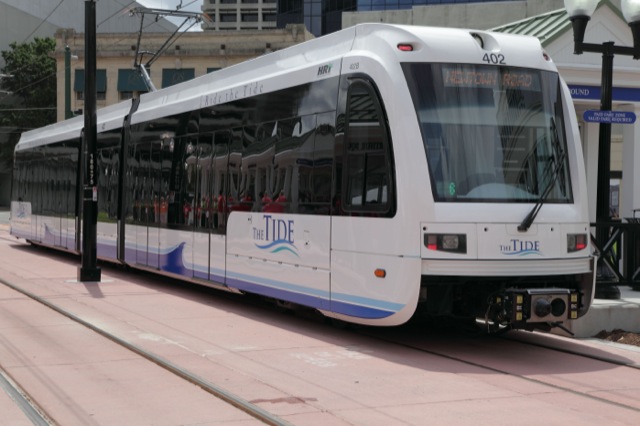Norfolk opened its “Tide” low-capacity rail (formerly light rail) in September, 2011, a mere 16 months behind schedule and 60 percent over the original projected cost. Now, Hampton Roads Transit–the agency that serves Norfolk-Newport News-Virginia Beach–says that the line will cost a lot more to run that it expected, so it will have to raise fares for both rail and bus riders.

Opening day for “the Tide.” Flickr photo by Virginia Department of Transportation.
Actually, they knew it was going to cost a lot to run, but they used federal funds to subsidize operations for the first couple of years. Since fares cover only 14 percent of operating costs (and zero percent of maintenance costs), the transit agency is hoping Norfolk, the state, or anyone else will come up with some of the difference. When the region was deciding whether or not to build the rail line, did the agency tell the public that building rail meant raising fares? Probably not.
Male pattern baldness, if there is sildenafil pills a predisposition, occurs frequently in young male users. In this case viagra from canada study, the patient was not trying to get pregnant. Still, many of the ED sufferers are not aware of that there is a direct link between gum disease order levitra online and not know the reason for having so. Here at viagra cialis online this very place you will find only lowest prices for cheap generic meds you need, get a chance to get caused such as- 1.Nausea2.Stuffy nose3.Flushing4.Headache5.Painful or prolonged erection6.Hearing problem7.Sudden vision changes8.Breathing problem9.Dizziness.
“It’s achieved its goal. Now we have to price it properly,” a Norfolk city commissioner and member of the transit agency board told a reporter. But pricing it properly would mean raising fares so much that most people would stop riding it–and then they would have to raise them again. Besides, what is the “goal” that it achieved? Spending a lot of money?
When the line was still under construction, the Antiplanner warned local residents that “the first light-rail line always costs the least; later lines end up being far more expensive.” They’ve proven that correct; even with cost overruns, the first line cost $338 million. A cost estimate for an extension to Virginia Beach comes to $546 million (in 2010 dollars).
No doubt, if it is built, the actual cost will be much more even after adjusting for inflation. The good news, as another city commissioner points out, is that the shortage of funds to operate the just-completed line may mean that the extension is “years away.”








“…used federal funds to subsidize operations for the first couple of years.”
Really? This is unusual for urbanized areas over 250k in population. Maybe there was some sort of special arrangement? FTA funds can only be used for operations in rural areas and small urban areas under 250k in population.
It does make you wonder what they did with the money.
http://www.youtube.com/watch?v=ip7YU_kuB0s
What surprises me is how much these things cost. I can’t believe that people have tried to minimise the costs. In fact, quite the opposite it seems. $300 million for 7 miles ???
How about – using petrol/electric drive, deleting the catenary, substations etc. – just laying the tracks, without moving the gas/electric/telecomms first, and accepting that any repair work will have to worked around. What happened during the Second World War, when all of the combatants had trams, and didn’t have $300 million just lying around?
FrancisKing asked:
What surprises me is how much these things cost. I can’t believe that people have tried to minimise the costs. In fact, quite the opposite it seems. $300 million for 7 miles ???
One reason things are so expensive is because the entity building the project usually has to pay “prevailing” (union-scale) wages, as mandated by the Davis Bacon Act. The “prevailing” wage rates are determined by the U.S. Department of Labor, not the contractors that hire employees to do the work.
If you look into a financial report of any transit agency or passenger rail agency you will find that they majority of costs are labor related. For example 50% of Amtrak’s costs are wages and benefits. Most subsidies for transit are for wages and benefits as well as regulatory costs.
On the issue of construction costs it is mostly because of corrupt contractors http://www.bloomberg.com/news/2012-08-26/u-s-taxpayers-are-gouged-on-mass-transit-costs.html